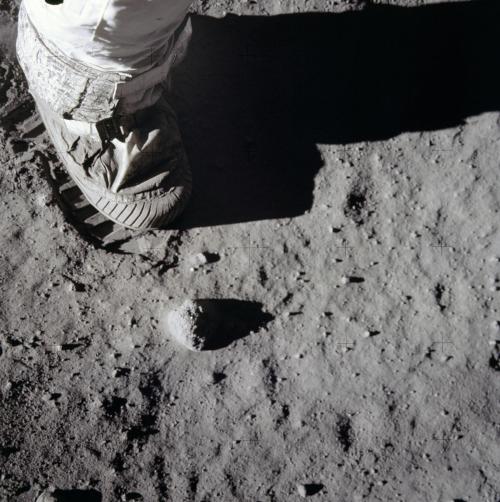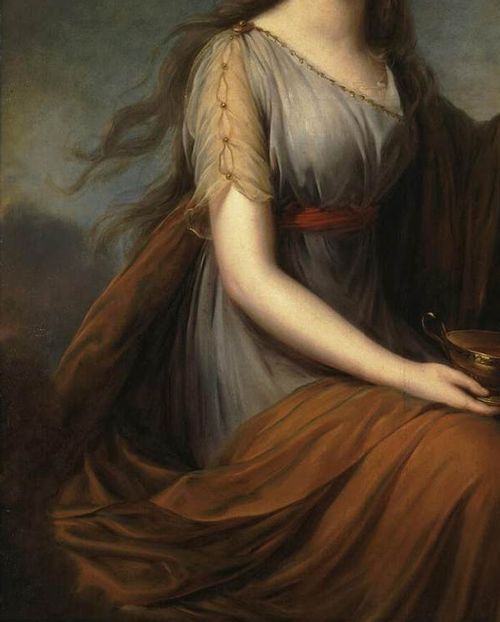Polychrome Relief Of The Warrior King Thutmose III (1479-1425 BC) Wearing The Atef Crown And False Beard,

Polychrome relief of the warrior king Thutmose III (1479-1425 BC) wearing the Atef crown and false beard, from Deir el-Bahari. Now in the Luxor Museum.
More Posts from Teddyglez1976 and Others

Ball Scene - Walter Heimig

El remedio para librarse de una tentación: sucumbir a ella. Si resistís, vuestra alma enfermará de deseo. Oscar Wilde. Imagen: La musa. Gabriel de Cool, 1895.

July 20, 1969: People around the world tune their radios and television sets to watch humans step foot on the Moon for the first time.
Gather ‘round with us today and experience history as it unfolded 50 years ago.
Watch NASA TV at 4 p.m. EDT as we replay the original live broadcast of the Apollo 11 Moon landing.
Then, at 10 p.m. EDT, watch the replay of the original live broadcast of the first steps on the Moon, as the world watched it in 1969:

Your Gut in Space
Finding the Right Balance for the Microbiota
Trillions of microorganisms live on and in the human body, many of them essential to its function and health. These organisms, collectively known as the microbiota, outnumber cells in the body by at least five times.

Microorganisms in the intestinal tract, the gut microbiota, play an especially important role in human health. An investigation on the International Space Station, Rodent Research-7 (RR-7), studies how the gut microbiota changes in response to spaceflight, and how that change in turn affects the immune system, metabolic system, and circadian or daily rhythms.

Research shows that the microbiota in the mammalian digestive tract has a major impact on an individual’s physiology and behavior. In humans, disruption of microbial communities has been linked to multiple health problems affecting intestinal, immune, mental and metabolic systems.

The investigation compares two different genetic strains of mice and two different durations of spaceflight. Twenty mice, ten of each strain, launch to the space station, and another 20 remain on the ground in identical conditions (except, of course, for the absence of gravity). Mice are a model organism that often serves as a scientific stand-in for other mammals and humans.

Fecal material collected from the mice every two weeks will be examined for changes in the gut microbiota. Researchers plan to analyze fecal and tissue samples after 30 and 90 days of flight to compare the effects of different durations of time in space.

With a better understanding of relationships between changes such as disruption in sleep and an imbalance of microbial populations, researchers can identify specific factors that contribute to changes in the microbiota. Further studies then can determine proactive measures and countermeasures to protect astronaut health during long-term missions.

Make sure to follow us on Tumblr for your regular dose of space: http://nasa.tumblr.com.

Portrait of Anna Pitt as Hebe, by Louise Élisabeth Vigée-Lebrun, 1792 (detail)
Hundreds of Roman gold coins found in basement of old theater

Archaeologists are studying a valuable trove of old Roman coins found on the site of a former theater in northern Italy.
The coins, at least 300 of them, date back to the late Roman imperial era and were found in a soapstone jar unearthed in the basement of the Cressoni Theater in Como, north of Milan.
“We do not yet know in detail the historical and cultural significance of the find,” said Culture Minister Alberto Bonisoli in a press release. “But that area is proving to be a real treasure for our archaeology. A discovery that fills me with pride.”
Whoever placed the jar in that place “buried it in such a way that in case of danger they could go and retrieve it,” said Maria Grazia Facchinetti, a numismatist – or expert in rare coins – at a Monday press conference.
“They were stacked in rolls similar to those seen in the bank today,” she said, adding the coins have engravings about emperors Honorius, Valentinian III, Leon I, Antonio, and Libio Severo “so they don’t go beyond 474 AD.“ Read more.




Circle of Artemisia Gentileschi (Italian, 1593 - c. 1656): Mary Magdalene, holding a skull (via Sotheby’s)

"Ahora te quiero, como el mar quiere a su agua: desde fuera, por arriba, haciéndose sin parar con ella tormentas, fugas, albergues, descansos, calmas".
Pedro Salinas.
-
 lylyfaa liked this · 3 years ago
lylyfaa liked this · 3 years ago -
 pharaohhorus liked this · 4 years ago
pharaohhorus liked this · 4 years ago -
 an-abyss-called-life liked this · 4 years ago
an-abyss-called-life liked this · 4 years ago -
 injint liked this · 5 years ago
injint liked this · 5 years ago -
 filmjunky-99 liked this · 5 years ago
filmjunky-99 liked this · 5 years ago -
 distinguishedroadprofessorspy liked this · 6 years ago
distinguishedroadprofessorspy liked this · 6 years ago -
 stcb13 reblogged this · 6 years ago
stcb13 reblogged this · 6 years ago -
 eleutheryos reblogged this · 6 years ago
eleutheryos reblogged this · 6 years ago -
 eleutheryos liked this · 6 years ago
eleutheryos liked this · 6 years ago -
 vw-lowell reblogged this · 6 years ago
vw-lowell reblogged this · 6 years ago -
 perpulchra liked this · 6 years ago
perpulchra liked this · 6 years ago -
 kingdommmm reblogged this · 6 years ago
kingdommmm reblogged this · 6 years ago -
 jegcollector liked this · 6 years ago
jegcollector liked this · 6 years ago -
 savagecollageorchestra reblogged this · 6 years ago
savagecollageorchestra reblogged this · 6 years ago -
 ziautumn liked this · 6 years ago
ziautumn liked this · 6 years ago -
 9-wing-1 reblogged this · 6 years ago
9-wing-1 reblogged this · 6 years ago -
 shacca liked this · 6 years ago
shacca liked this · 6 years ago -
 p-nsy reblogged this · 6 years ago
p-nsy reblogged this · 6 years ago -
 defjux reblogged this · 6 years ago
defjux reblogged this · 6 years ago -
 pacogabby liked this · 6 years ago
pacogabby liked this · 6 years ago -
 arlathhan reblogged this · 6 years ago
arlathhan reblogged this · 6 years ago -
 csendkiraly liked this · 6 years ago
csendkiraly liked this · 6 years ago -
 fableattraction reblogged this · 6 years ago
fableattraction reblogged this · 6 years ago -
 missrupy liked this · 6 years ago
missrupy liked this · 6 years ago -
 chryso-poeia liked this · 6 years ago
chryso-poeia liked this · 6 years ago -
 jinxwild19 reblogged this · 6 years ago
jinxwild19 reblogged this · 6 years ago -
 scarletopalescence liked this · 6 years ago
scarletopalescence liked this · 6 years ago -
 ourladyofsorrow liked this · 6 years ago
ourladyofsorrow liked this · 6 years ago -
 hellopluisje reblogged this · 6 years ago
hellopluisje reblogged this · 6 years ago -
 wenlikthoughts reblogged this · 6 years ago
wenlikthoughts reblogged this · 6 years ago -
 negrodaumus reblogged this · 6 years ago
negrodaumus reblogged this · 6 years ago -
 negrodaumus liked this · 6 years ago
negrodaumus liked this · 6 years ago -
 enjoy003 reblogged this · 6 years ago
enjoy003 reblogged this · 6 years ago -
 enjoy003 liked this · 6 years ago
enjoy003 liked this · 6 years ago -
 fuckcoolbereal reblogged this · 6 years ago
fuckcoolbereal reblogged this · 6 years ago -
 fuckcoolbereal liked this · 6 years ago
fuckcoolbereal liked this · 6 years ago -
 giantsteppes liked this · 6 years ago
giantsteppes liked this · 6 years ago -
 thethirdman8 liked this · 6 years ago
thethirdman8 liked this · 6 years ago -
 lookingformyperfectsandwich reblogged this · 6 years ago
lookingformyperfectsandwich reblogged this · 6 years ago -
 swagreviewartisan liked this · 6 years ago
swagreviewartisan liked this · 6 years ago -
 erincorvus reblogged this · 6 years ago
erincorvus reblogged this · 6 years ago -
 da-da-sk liked this · 6 years ago
da-da-sk liked this · 6 years ago -
 adsertoris reblogged this · 6 years ago
adsertoris reblogged this · 6 years ago -
 adsertoris liked this · 6 years ago
adsertoris liked this · 6 years ago
Dedicado a los finos amantes de las bellas artes y el estilo exquisito del buen comer.
145 posts